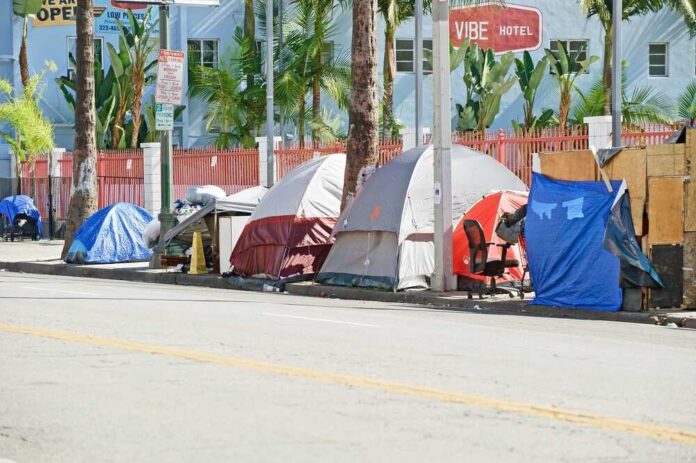
According to the most extensive homelessness report in California in three decades, nearly 50% of the homeless population in the state are individuals aged 50 and above. These individuals experienced homelessness primarily due to insufficient income to meet their financial obligations and maintain stable housing.
The report also sheds light on the unequal representation of Black and Native American individuals within the homeless population, underscoring their substantial overrepresentation within these communities.
With approximately 171,000 homeless residents, California accounts for roughly 30% of the entire homeless population in the country. The survey involved the participation of over 3,200 individuals.
The participants of the survey disclosed a median monthly household income of $960. A significant number of respondents expressed that rental subsidies would have been instrumental in preventing their eviction and maintaining stability in their lives.
Across different locations within the state, rental rates in California vary. However, according to property company Zillow, California has the highest apartment rent costs in the entire United States, with a median monthly rate of $2,542.
Surprise surprise: “California’s homeless population is predominantly made up of people who lived in the state before losing their housing”
Homelessness is caused by high housing costs
The only solution is to build more!https://t.co/5KKP7pflbC
— Joshua March (@joshuamarch) June 20, 2023
Dr. Margot Kushel, director of the Benioff Homelessness and Housing Initiative at the University of California, San Francisco, which released the report, said, “The results of the study confirm that far too many Californians experience homelessness because they cannot afford housing.”
Kushel stated that the survey also debunked the notion that a significant number of individuals experiencing homelessness originate from different states, as the majority of respondents surveyed remained within the same county where they once had homes.
According to Janis Wilds, a dedicated resident of San Diego and active volunteer at a non-profit organization named Housing for the Homeless, the majority of individuals she has assisted in her role are elderly individuals facing homelessness, often accompanied by a range of medical conditions.
Wilds said, “Seniors are definitely the largest group of unhoused in San Diego County, and most of them are physically disabled with nowhere to go. They stay in the Downtown area because that’s where they get most of the services if they are even able to.”
She went on to say, “They are down there with their walkers and wheelchairs, and there is no available housing for them. They literally can’t move, so what do they do? They stay in the encampments, which is horrendous. It’s an everyday humanitarian crisis happening right in front of us, but the reaction is to just bulldoze the belongings of people who are handicapped and mentally ill.”


















